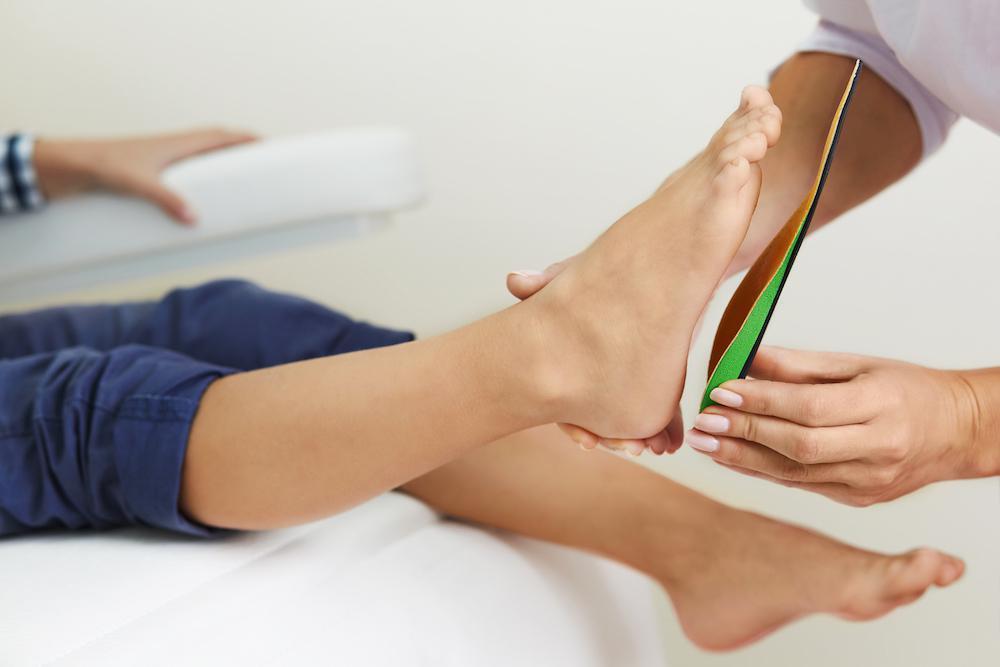Orthotics are medical devices placed inside shoes to correct biomechanical foot issues. They can help with problems like walking, standing, or running. By supporting the feet, they can also alleviate pain in other parts of the body, such as the knees, hips, and back. Here is more information on orthotics, including the types available and their benefits:
What Are Orthotics?
Orthotics are custom-made or prefabricated shoe inserts designed to support, align, or correct the function of the foot and lower limb. A podiatrist may prescribe them after a thorough evaluation of your foot structure, gait, and specific medical condition. Unlike generic insoles found in stores, orthotics are tailored to your unique foot shape and biomechanical requirements.
These devices are crafted from various materials, ranging from rigid plastics to soft foam, depending on the level of control and cushioning needed. The primary goal is to redistribute pressure across the foot, reduce strain on sensitive areas, and promote proper foot alignment during movement. This can address a wide range of musculoskeletal problems.
What Are the Different Types?
Orthotics are generally categorized into two main types: functional and accommodative.
- Functional: These are made from semi-rigid materials such as plastic or graphite and are designed to control abnormal motion. They are beneficial for treating foot pain caused by unusual movement, shin splints, or tendinitis.
- Accommodative: These are softer and are intended to provide cushioning and support. They are crafted from flexible, padded materials to relieve pressure from uncomfortable or sore spots, which is beneficial for conditions like diabetic foot ulcers or painful calluses.
The selection between functional and accommodative orthotics depends on the specific condition being treated and the patient’s individual needs.
How Do They Work?
Orthotics function by providing support to the arches of the feet and realigning the foot and ankle into a more anatomically correct position. When your feet are correctly aligned, it can have a positive effect on your entire body. This alignment helps to distribute your body weight more evenly, reducing stress on the feet, ankles, knees, and back.
By correcting foot posture, orthotics alter the forces acting on your feet during walking or running. This can lead to improved foot function and a reduction in pain associated with various conditions. The support they provide may also make daily activities more comfortable and less strenuous on your joints.
Who Needs Orthotics?
Individuals with various foot conditions may find orthotics beneficial. People with flat feet or high arches often experience pain and instability, which can be managed with the proper support. Those suffering from plantar fasciitis, a common cause of heel pain, may also get relief from custom orthotics. A healthcare professional will assess your specific situation and recommend whether orthotics are appropriate for you.
What Are the Benefits?
The use of orthotics offers several benefits for individuals with foot and ankle issues. They can provide substantial pain relief for chronic conditions and improve overall foot function. By correcting alignment, orthotics can also enhance posture and balance, reducing the risk of falls and further injuries. Another benefit is increased comfort during daily activities, allowing people to stand, walk, and exercise with less discomfort.
Improve Your Posture and Balance
Orthotics are a practical tool for managing a range of foot and ankle problems. By providing targeted support and correcting alignment issues, they can alleviate pain, improve function, and enhance your overall quality of life. If you are experiencing persistent foot pain or discomfort, consulting with a podiatrist can help determine if orthotics are right for you. Schedule a consultation to learn more today.


